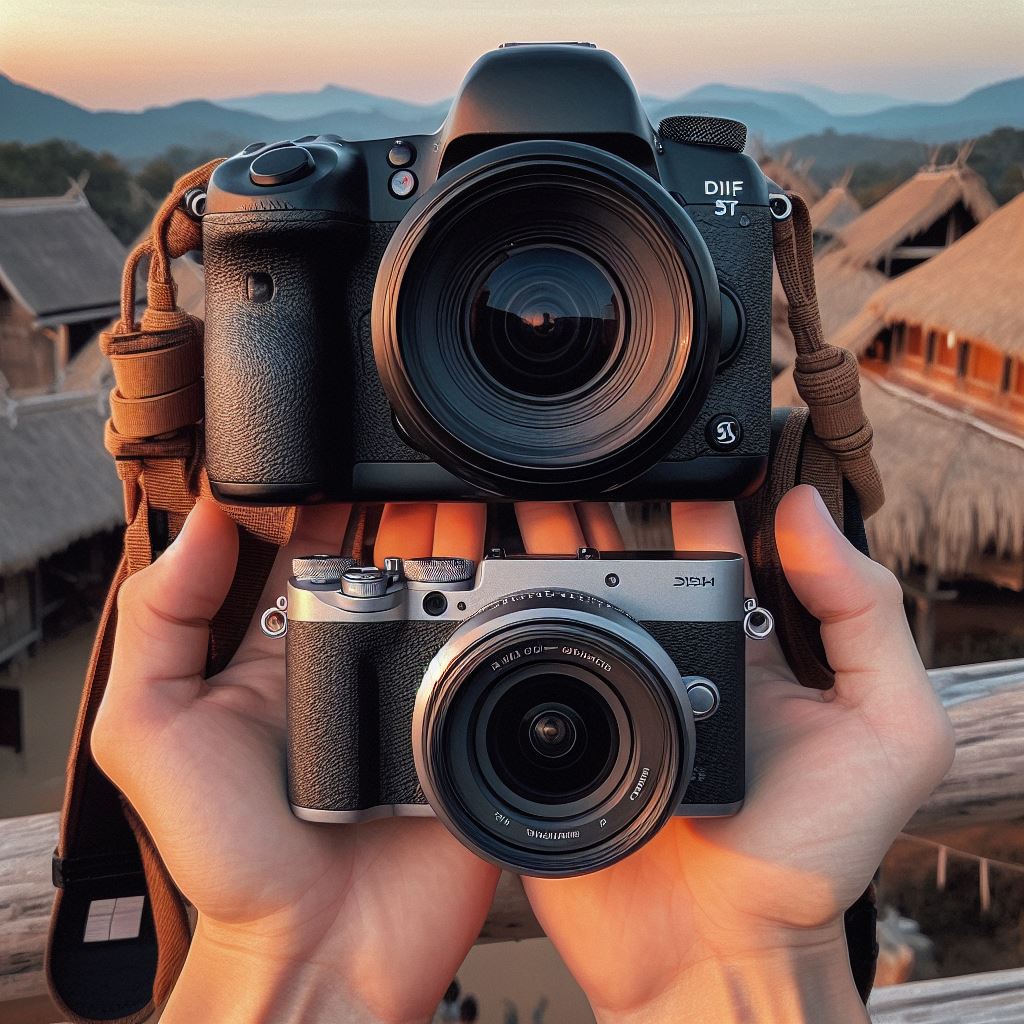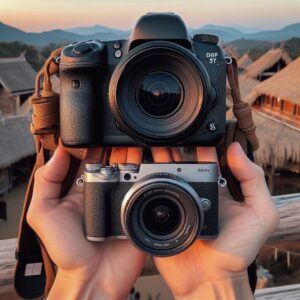Camera technology has dramatically evolved over the years, shaping the way photographers capture the world. There has been a leap from single-lens reflex (SLR) to mirrorless cameras. That’s a pretty big shift in imaging technology. Mirrorless cameras, as the name suggests, lack the mirror mechanism found in traditional SLRs. This change makes for a simpler design that allows for several benefits. They use an image sensor to provide a digital preview of the image either on the LCD screen or through an electronic viewfinder.

Advanced Features
The rise in mirrorless camera popularity isn’t accidental. Professional photographers and hobbyists alike are praising their advanced features and the versatility they bring to the table. Just walk into any camera store or browse through an online forum, and you’ll notice the buzz surrounding these compact imaging powerhouses.
Equip You With Knowledge
In this article, I will give you a quick look into the world of mirrorless cameras. The goal is to equip you with knowledge to help you understand their strengths and potential drawbacks. Not only should this information aid your decision-making process, but it should also set the stage for a smooth transition should you choose to switch to a mirrorless system.
Advantages of Going Mirrorless
What draws photographers towards these sleek devices? First, let’s consider size. Traditional DSLRs house mirror mechanisms that add bulk. Without these mirrors, mirrorless cameras slim down, making them less cumbersome and more travel-friendly.
Less Fatigue During Long Shoots
Portability translates into more spontaneous shots and less fatigue during long shoots or travel. It’s not just about comfort; the reduced weight also allows more room for additional lenses or equipment in your bag.
Faster Shutter Speeds
Next up, speed. Mirrorless cameras boast faster shutter speeds and continuous shooting capabilities. That’s crucial when capturing split-second action in sports or wildlife photography. This speed stems from the lack of a mirror flipping up and down – a process that takes time, however fractional.
Electronic Viewfinder Is A Game Changer
And let’s talk about what you see before you take the picture. The electronic viewfinder, or EVF, is a game changer. It displays a live image sensor feed, allowing you to preview your final shot in real-time. Adjust exposure, tweak white balance, and get immediate feedback right in the viewfinder.
Silent Shooting Mode
Silence can be golden, particularly in photography. Mirrorless cameras offer a silent shooting mode – an invaluable feature when you need to be discreet, like in wildlife or street photography where the shutter click might disturb the scene.
Challenges and Downsides of Mirrorless Cameras
While mirrorless cameras have certainly earned their place in many photographers’ bags, they’re not without their own set of challenges. Users accustomed to traditional digital single-lens reflex (DSLR) cameras might notice a learning curve, as well as a few inconveniences.
Battery Life Could Be Shortened
One of the more significant drawbacks is battery life. Mirrorless cameras have a reputation for draining their batteries quicker than DSLRs. The electronic viewfinder (EVF) and LCD screen, key features of mirrorless technology, are the primary culprits for this. Unlike optical viewfinders in DSLRs, these electronic components consume power continuously, often leading to the need for carrying spare batteries or planning for frequent recharging when out on long shoots.
Lens Selection Could Be A Problem
Lens selection can also present difficulties, especially for new mirrorless systems. Certainly, the range of available lenses has increased, but it may still pale in comparison to the vast catalogs of DSLR lenses. This can be a point of frustration for photographers who need specialized lenses for their work or who are looking for more budget-friendly options.
EVF Lag
Furthermore, some photographers express concerns about EVF lag. Although the technology has seen substantial improvements, certain circumstances, like low-light conditions, can result in a slight delay in the viewfinder refresh rate. This can be disconcerting, particularly for those who rely on split-second timing to capture their images.
Mirrorless Cameras in Professional and Amateur Settings
Deciding if a mirrorless camera is right for you, whether you’re a seasoned professional or a budding photographer, involves considering how you shoot and what you shoot. The presence of advanced mirrorless cameras in the arsenals of professionals underscores their growing capabilities. Yet, some professionals hold onto their DSLRs for specific shooting conditions.
How Does The Camera Feel In Your Hands?
I’ve learned that the right choice isn’t solely about technical specifications; it’s also about how the camera feels in your hands and matches your personal shooting style. Comfort, accessibility of controls, and the overall user experience often trump the latest feature list.
Constantly Improving
Looking ahead, the trajectory of mirrorless technology suggests not only an increase in performance but also a broader adoption across various genres of photography. Newcomers shouldn’t be surprised to witness continuous innovation that might soon bridge the current gaps, such as battery life and lens variety issues.
Final Thoughts
For those contemplating the switch to mirrorless, start by renting a model that interests you. Practical, hands-on experience is invaluable. Look for mirrorless systems that support adapter use for your existing lenses, to ease the transition and reduce initial investment. And remember, the tool only enhances the talent—it doesn’t replace the need for skills, vision, and creativity in photography.

